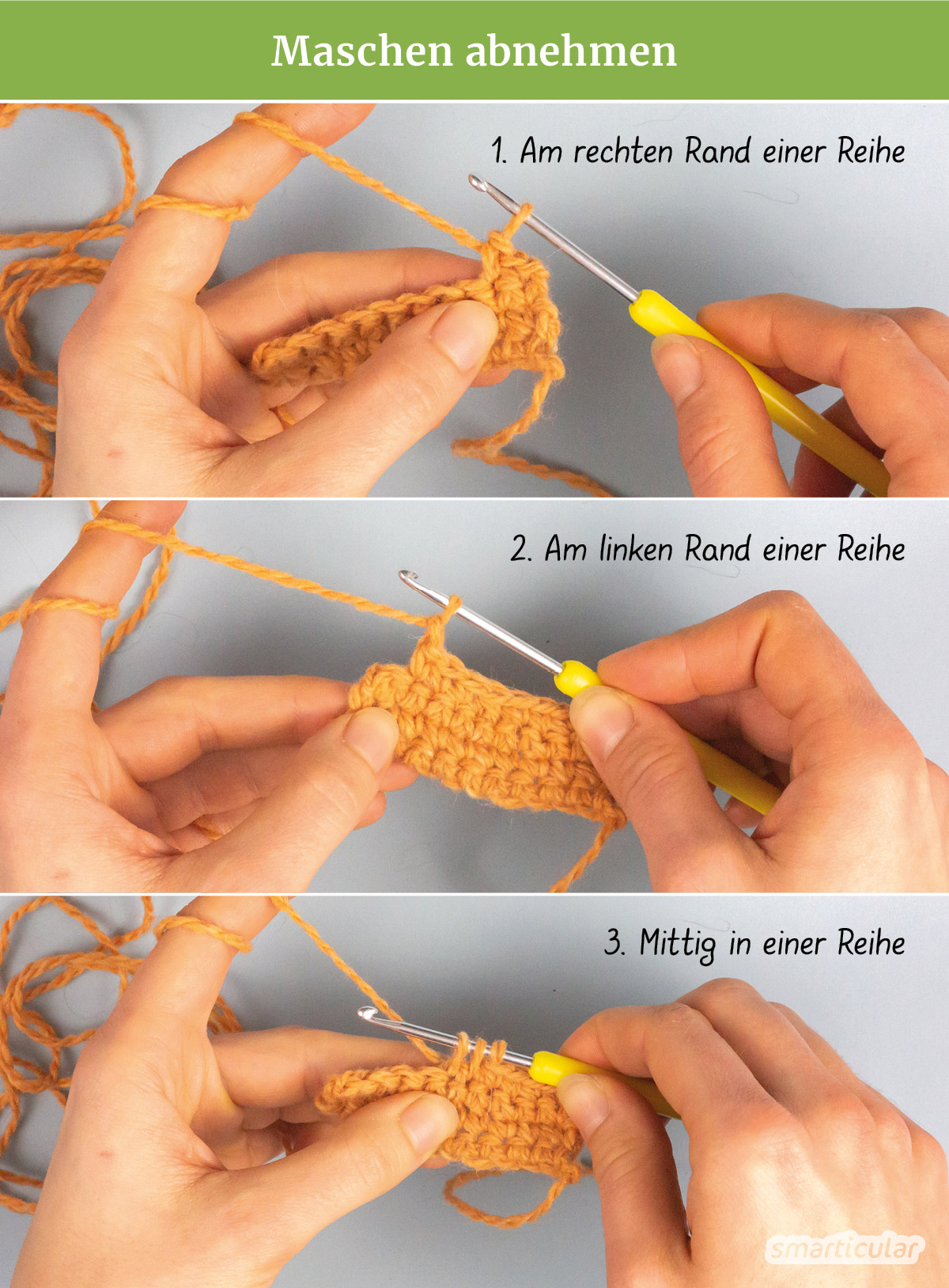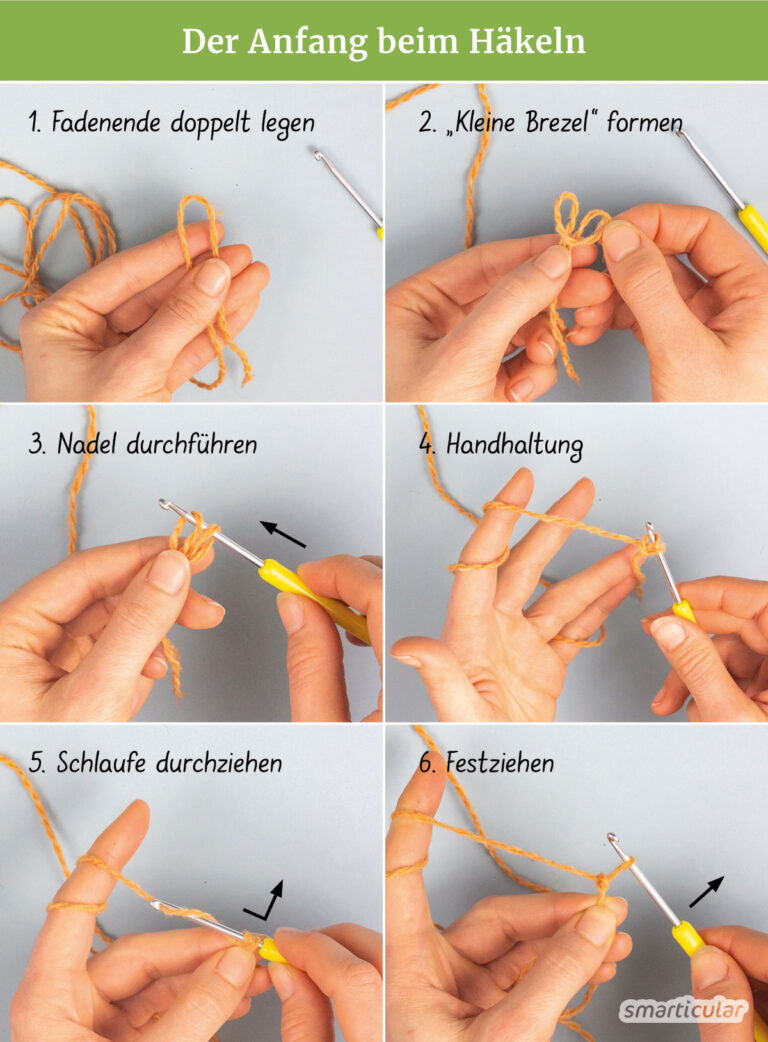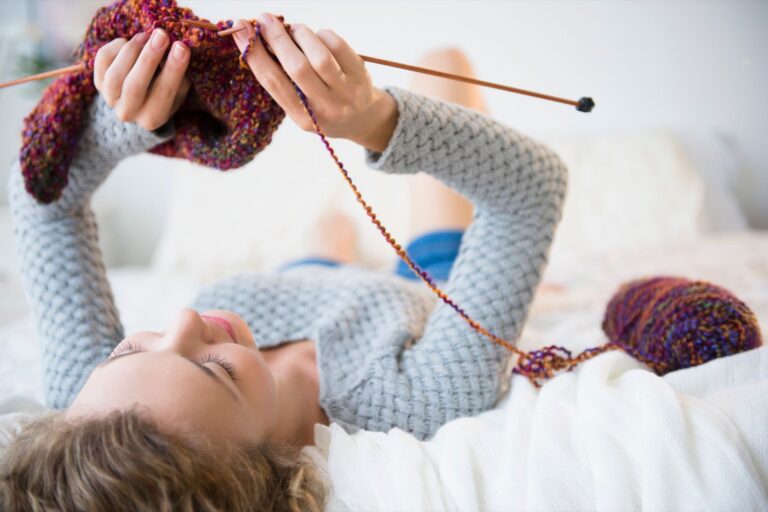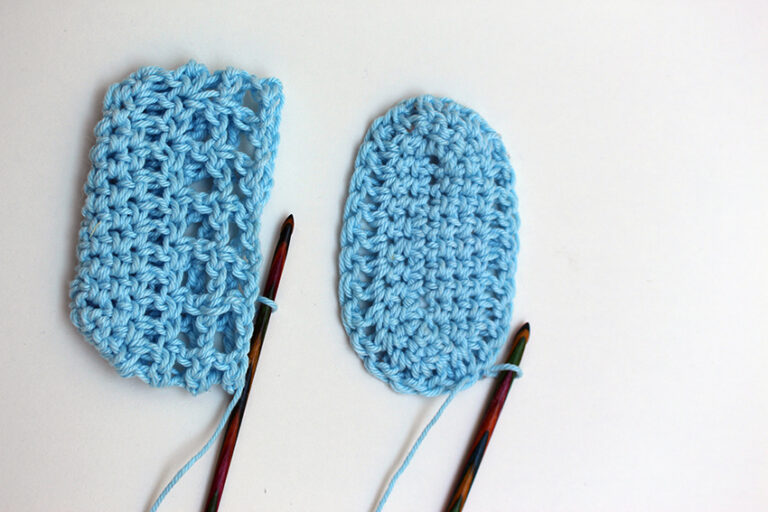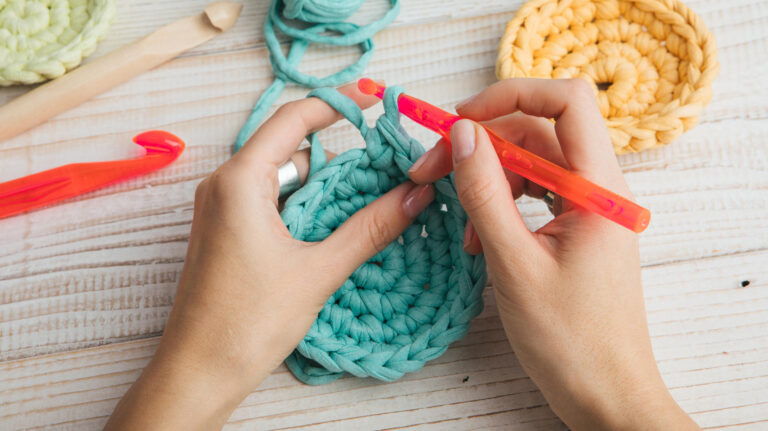Ist Es Schwer Häkeln Zu Lernen
Are you curious about learning how to crochet? “Ist Es Schwer Häkeln Zu Lernen” explores the question of whether crochet is difficult to learn. Whether you’re a complete beginner or have some experience, this article will provide insights and tips on the learning process. Discover the joys of creating beautiful crochet projects and find out just how accessible and rewarding the art of crochet can be.
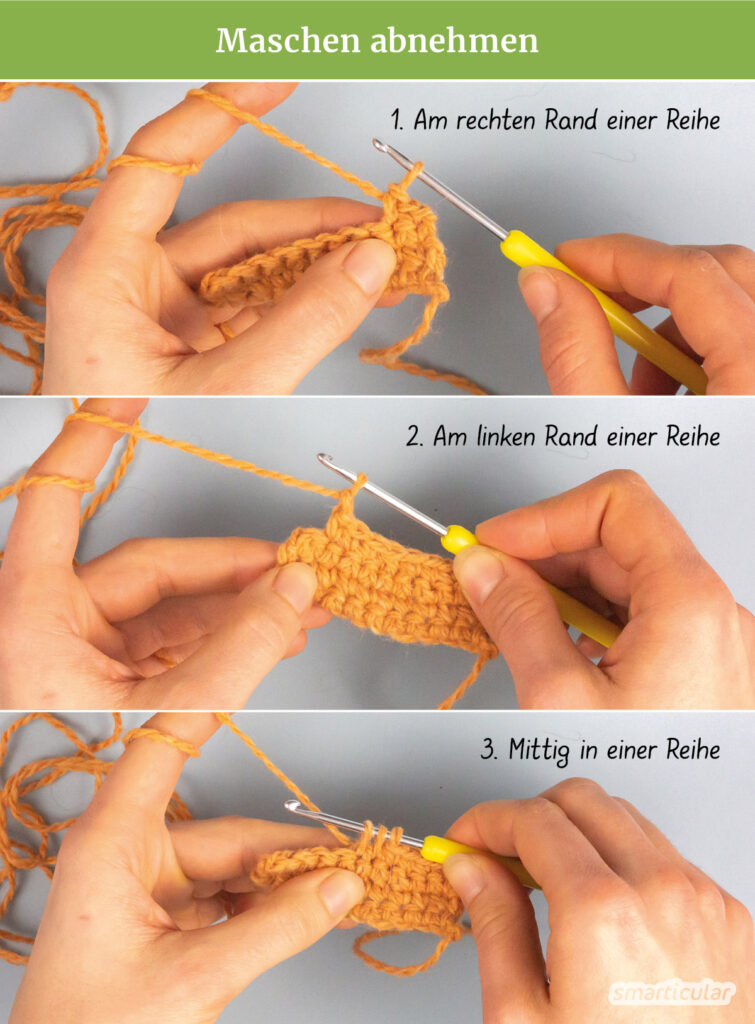
This image is property of www.smarticular.net.
Materials Needed
To get started with crochet, there are a few basic materials you will need. First and foremost, you will need a set of crochet hooks. These come in different sizes, so it’s a good idea to have a range of sizes in your collection. You will also need some yarn. There are different types of yarn available, each with its own texture and weight. Choose a yarn that feels comfortable in your hands and suits the project you have in mind. Lastly, you may want to have a pair of scissors, a yarn needle, and stitch markers handy for finishing touches and to help keep track of your progress.
Basic Stitches
Once you have your materials ready, it’s time to learn some basic stitches. These stitches are the building blocks of crochet and will be used in most projects you tackle. Let’s go through a few of the most fundamental stitches together.
Chain Stitch
The chain stitch is the first stitch you will learn in crochet. It forms a foundation chain that sets the length of your project. To make a chain stitch, simply hold the hook in your dominant hand and yarn over, then pull the yarn through the loop already on the hook. Repeat this process until you have the desired number of chain stitches.
Single Crochet
The single crochet stitch is one of the most commonly used stitches in crochet. It creates a tight, dense fabric that is great for projects that require durability. To make a single crochet, insert the hook into the designated stitch, yarn over, and pull through a loop. Yarn over again and pull through both loops on the hook.
Double Crochet
The double crochet stitch is slightly taller than the single crochet stitch and creates a looser fabric. To make a double crochet, yarn over, then insert the hook into the designated stitch. Yarn over and pull through a loop, then yarn over again and pull through the first two loops on the hook. Finally, yarn over once more and pull through the last two loops on the hook.
Half Double Crochet
The half double crochet stitch falls in between the height of a single crochet and a double crochet. It creates a fabric that is less dense than the single crochet but not as loose as the double crochet. To make a half double crochet, yarn over, then insert the hook into the designated stitch. Yarn over and pull through a loop, then yarn over again and pull through all three loops on the hook.
Treble Crochet
The treble crochet stitch is taller than the double crochet and creates a loose, open fabric. To make a treble crochet, yarn over twice, then insert the hook into the designated stitch. Yarn over and pull through a loop, yarn over and pull through the first two loops on the hook, yarn over and pull through the next two loops, and finally, yarn over and pull through the last two loops on the hook.
Common Techniques
Now that you’ve mastered the basic stitches, let’s move on to some common techniques that will expand your crochet skills.
Increasing
Increasing in crochet allows you to gradually add stitches to your work, making it wider or shaping it as needed. There are several ways to increase stitches, but the most common method is to work two stitches into the same stitch from the previous row or round. By doing this, you will see your project grow and take shape right before your eyes.
Decreasing
When you want to make your project narrower or shape it, you will need to decrease stitches. There are different techniques for decreasing, such as skipping stitches or working stitches together. This creates a tapered effect and allows you to craft items with intricate shapes and curves.
Joining Yarn
In most projects, you will need to join a new ball or skein of yarn to continue working. To join yarn, start by leaving a long enough tail to weave in later. Then, insert your hook into the designated stitch, yarn over with the new yarn, and pull through a loop. Yarn over with the new yarn again and pull through both loops on the hook. This will securely attach the new yarn and allow you to continue crocheting.
Changing Colors
Changing colors can add visual interest and variety to your projects. To change colors, complete the last stitch of the current color until two loops remain on the hook. Then, drop the current color and pick up the new color, bringing it over the hook and yarn over with the new color to complete the stitch. Continue working with the new color, carrying the old color along the back of your work until you need it again.
Working in the Round
Working in the round is a technique commonly used in projects such as hats, amigurumi, and coasters. It involves crocheting in a continuous spiral, without turning your work at the end of each round. To work in the round, simply start by crocheting the desired number of stitches into a magic ring or by working a chain and joining it with a slip stitch to form a ring. Then, continue crocheting into each stitch of the previous round, moving in a clockwise direction.
Reading Patterns
Once you have a good understanding of the basic stitches and techniques, it’s time to read and follow crochet patterns. Patterns provide detailed instructions on how to create a specific project, from start to finish.
Understanding Symbols
Crochet patterns use various symbols and abbreviations to represent different stitches and techniques. It’s essential to familiarize yourself with these symbols to understand the instructions properly. Common symbols include “ch” for chain stitch, “sc” for single crochet, “dc” for double crochet, and so on. Take some time to study and learn these symbols, as they will be your guide in following patterns.
Following Written Instructions
Written instructions in crochet patterns provide a step-by-step guide on how to create each part of a project. These instructions often include stitch counts, stitch placement, and special notes to help you along the way. Take your time to read the instructions carefully, and if something is unclear, consult online resources or ask for help. As you gain experience, following written instructions will become more natural.
Reading Crochet Charts
Crochet charts, also known as diagrams or graphs, are visual representations of patterns. These charts use symbols and colored blocks to convey the stitches and colors used in a project. They are particularly helpful for visual learners who prefer to see the pattern laid out graphically. Learning to read crochet charts can open up a whole new world of patterns and designs for you to explore.
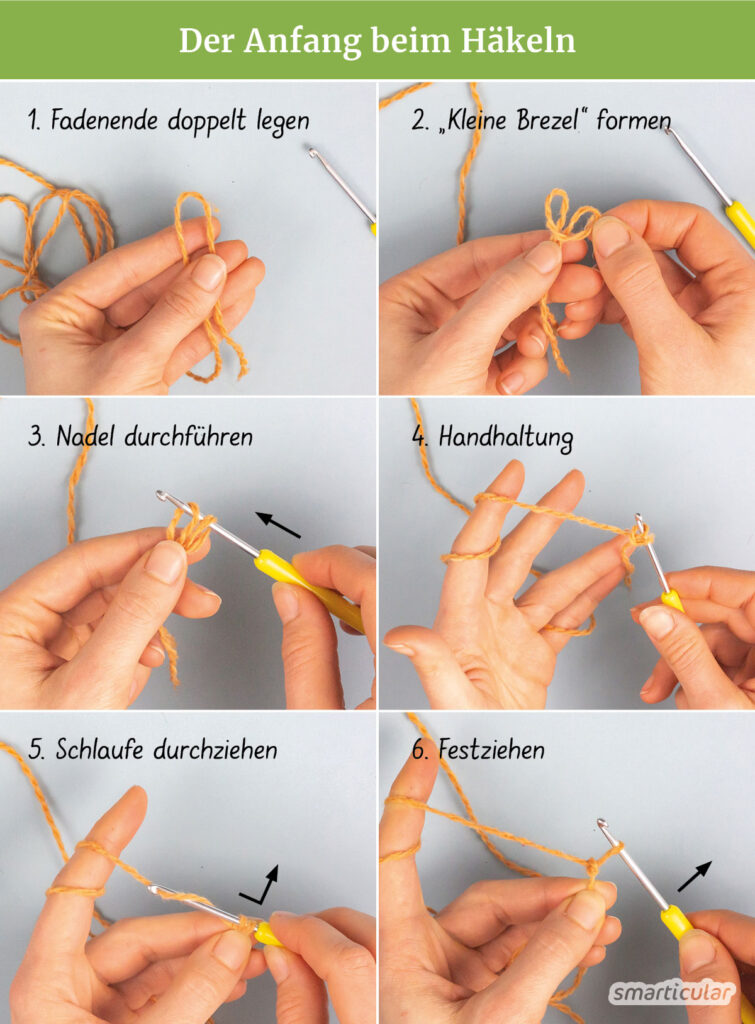
This image is property of www.smarticular.net.
Troubleshooting
Even experienced crocheters encounter challenges and make mistakes from time to time. Knowing how to troubleshoot common issues will help you overcome any obstacles and create beautiful finished pieces.
Fixing Mistakes
It’s inevitable to make mistakes while crocheting, but don’t worry! Most mistakes can be easily fixed. If you notice a mistake in your work, try undoing the stitches or rows back to the error, fix the mistake, and then continue working as normal. Alternatively, you can use a crochet hook to pick up the stitches around the mistake and rework them correctly.
Understanding Tension
Tension is the tightness or looseness with which you hold your yarn and work your stitches. Consistent tension is crucial for creating even, balanced pieces. If your tension is too tight, your finished item may be smaller than intended, while loose tension can result in a loose and floppy project. Practice and patience are key in finding the right tension that works for you.
Blocking Your Finished Piece
Blocking is the process of shaping and setting your finished crochet piece into its final form. It involves wetting or steaming the item and then allowing it to dry or cool down while maintaining the desired shape. Blocking can help even out stitches, relax the yarn, and give your project a more polished look. It is particularly important for items like lace shawls where the stitch definition and drape are crucial.
Projects for Beginners
Now that you have the basics down, it’s time to put your skills to the test with some beginner-friendly projects. These projects will allow you to practice your stitches and techniques while creating something useful or decorative.
Scarves
Scarves are a classic crochet project for beginners. They provide an opportunity to practice your stitch tension and work with different yarn weights and fibers. Start with a simple pattern that involves basic stitches and gradually build your skills by experimenting with different stitch patterns or adding embellishments.
Hats
Hats are another great project for beginners, as they allow you to practice shaping techniques. Begin with a basic beanie pattern that uses single crochet or half double crochet stitches and gradually move on to more advanced hat patterns with different stitch patterns or brim styles.
Blankets
While blankets may seem intimidating for beginners due to their size, they are actually an excellent way to practice your stitches and techniques on a larger scale. Start with a simple baby blanket or lapghan pattern and gradually work your way up to more intricate designs. Choose a cozy, washable yarn for your blanket to make it both beautiful and practical.
Amigurumi
Amigurumi refers to the art of crocheting small stuffed animals or toys. These adorable creations are perfect for practicing single crochet stitches and shaping techniques. Start with a basic amigurumi shape, such as a ball or a simple animal, and gradually challenge yourself with more complex designs.
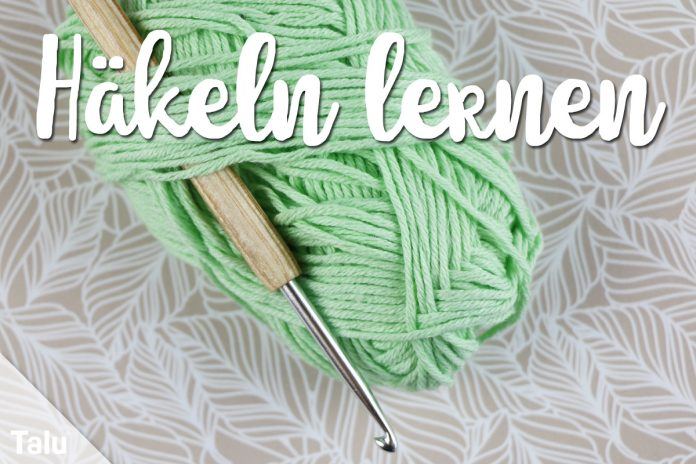
This image is property of www.talu.de.
Online Resources
The internet is a treasure trove of crochet resources that can support and inspire you on your crochet journey. Here are a few online resources that are worth exploring:
Video Tutorials
Video tutorials are an excellent way to learn new stitches and techniques visually. Many talented crocheters and professional instructors share their knowledge and tips through video platforms such as YouTube. Find a few favorite channels and bookmark them for easy reference whenever you need guidance.
Pattern Websites
Pattern websites offer a vast collection of crochet patterns for all levels and interests. Browse through websites such as Ravelry, LoveCrafts, or Lion Brand to find patterns for anything from scarves and hats to intricate lace shawls and detailed amigurumi. These websites often allow you to filter patterns by difficulty level, yarn weight, or specific project type.
Crochet Forums
Crochet forums provide an online community where you can connect with fellow crocheters, ask questions, and share your experiences. Joining a crochet forum can be a great way to find inspiration, seek advice, and learn from more experienced crocheters. Participating in discussions and sharing your own projects can also help you build connections and receive constructive feedback.
Practice and Patience
As with any new skill, practicing crochet regularly is essential to improving and mastering the craft. Set aside dedicated time each week to work on small projects or practice new stitches. Remember, it’s okay to make mistakes and encounter challenges along the way. Approach each project with patience and a willingness to learn, and you will gradually become more confident and skilled in your crochet abilities.

This image is property of www.smarticular.net.
Seeking Help
If you find yourself struggling with a particular stitch, technique, or project, don’t hesitate to seek help. There are several ways to reach out for assistance and guidance.
Joining a Crochet Class
Taking a crochet class, whether in person or online, can provide valuable guidance and hands-on instruction from an experienced teacher. In a class setting, you can ask questions, receive personalized feedback, and learn alongside other students who share your passion for crochet. Check with local craft stores or community centers for classes in your area or explore online platforms that offer virtual crochet courses.
Asking Experienced Crocheters for Advice
If you are part of a crochet community or have friends or family members who crochet, don’t be afraid to ask for their help and advice. Experienced crocheters are often happy to share their knowledge and offer guidance. Whether it’s deciphering a confusing pattern or troubleshooting a stitch, reaching out to someone who has been there before can make a significant difference in your learning journey.
Conclusion
Congratulations on embarking on your crochet journey! Remember that learning to crochet is a process that takes time and practice. Start with the basics, explore different stitches and techniques, and gradually tackle more advanced projects. The key is to enjoy the process, have fun with your creations, and never hesitate to seek help or inspiration when needed. Happy crocheting!
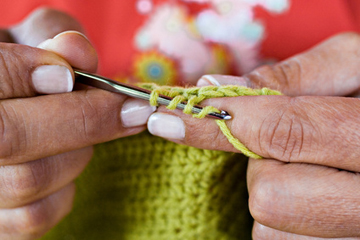
This image is property of www.kinder-tipps.com.
